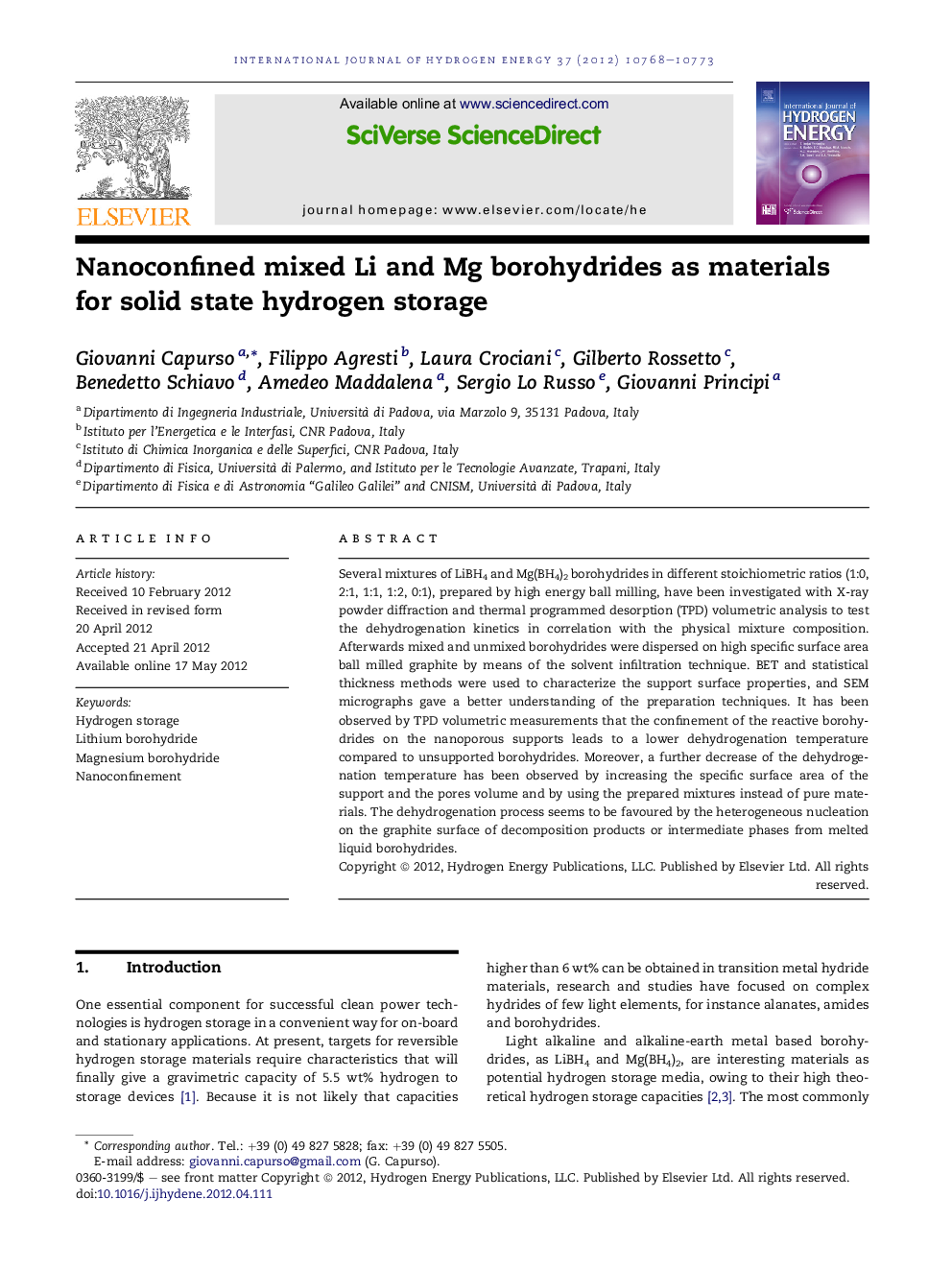| Article ID | Journal | Published Year | Pages | File Type |
|---|---|---|---|---|
| 1276359 | International Journal of Hydrogen Energy | 2012 | 6 Pages |
Several mixtures of LiBH4 and Mg(BH4)2 borohydrides in different stoichiometric ratios (1:0, 2:1, 1:1, 1:2, 0:1), prepared by high energy ball milling, have been investigated with X-ray powder diffraction and thermal programmed desorption (TPD) volumetric analysis to test the dehydrogenation kinetics in correlation with the physical mixture composition. Afterwards mixed and unmixed borohydrides were dispersed on high specific surface area ball milled graphite by means of the solvent infiltration technique. BET and statistical thickness methods were used to characterize the support surface properties, and SEM micrographs gave a better understanding of the preparation techniques. It has been observed by TPD volumetric measurements that the confinement of the reactive borohydrides on the nanoporous supports leads to a lower dehydrogenation temperature compared to unsupported borohydrides. Moreover, a further decrease of the dehydrogenation temperature has been observed by increasing the specific surface area of the support and the pores volume and by using the prepared mixtures instead of pure materials. The dehydrogenation process seems to be favoured by the heterogeneous nucleation on the graphite surface of decomposition products or intermediate phases from melted liquid borohydrides.
► Mixtures of LiBH4 and Mg(BH4)2 are analyzed and dispersed on high SSA carbons. ► TPD measurements show that confinement leads to lower dehydrogenation temperatures. ► A further decrease of temperature occurs by increasing the SSA of the support. ► Supported mixtures desorb at lower temperature than pure materials.
